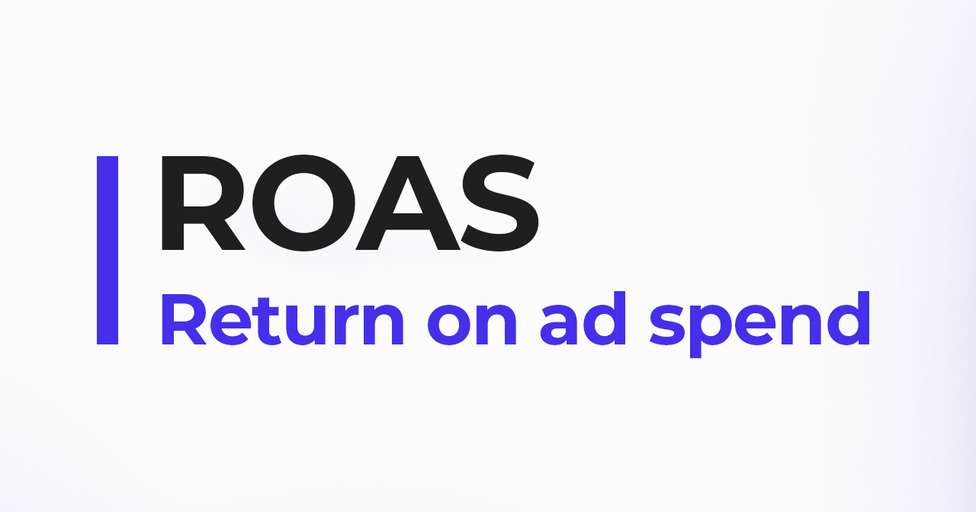The return on ad spend, or ROAS, is an important metric for any business that wants to measure investments and results related to advertising and marketing actions.
Read on to find out what exactly ROAS is, how to calculate it, what a good ROAS is and how it differs from other KPIs, such as ROI.
What is ROAS?
ROAS is a key performance indicator (KPI) taken into consideration by many online businesses when it comes to measuring an investment and the results obtained from a specific marketing action.
The ROAS reflects the amount of revenue earned for every dollar spent on a campaign.
It can be used to measure the profit achieved for each advertising expense. ROAS can be applied to an entire marketing strategy or to a specific campaign.
How do you calculate ROAS?
You can determine the ROAS of your campaign of action with this ROAS calculation formula:
ROAS = (revenue from ads / cost of ads) x 100
For example, imagine you launch a marketing campaign that brings you profits valued at $5,000, and the campaign itself cost you $200. In this case, when you apply the ROAS formula, the result you get is: 2,500.
Unfortunately, this is an exceptionally good ROAS result that you might only see once in a lifetime, such as with a campaign that goes viral or if certain actions are automated.

However, the difficult part of calculating the ROAS isn’t applying the ROAS calculation formula, but establishing the costs and profits. Sometimes these costs and profits won’t be a fixed cost, so you’ll need to calculate them yourself.
A good place to start is your Google Ads account, where you can see which ads you have running and the results and profits they’re bringing to your business.
Other sources where you may be spending on ads are Facebook Ads, LinkedIn Ads or similar channels for paid promotions.
In order to calculate your ROAS, you will need to consider which costs you’re going to include. For example, will you include the costs of all staff, whether this is internal or outsourced?
What you determine as the cost in your ROAS calculation formula can vary from case to case. It can be easier, and, sometimes more effective as well, to work only with the exact amount of costs, leaving collateral ad expenditure to the side.
What indicates a good ROAS?
Good ROAS comes hand in hand with higher conversion rates and a longer customer lifecycle and lifetime value.
When establishing your target ROAS, it’s important that you keep in mind that it should always give a positive result.
A good ROAS to aim for would be a 4:1 ratio —$4 revenue for every $1 spent on ad. Obviously, this result may vary depending on the sector, the specific company and the size of the business.
While some businesses can rest assured with a ROAS of 1:1, others may need to target a ROAS of 10:1 value to stay profitable.
Smaller ROAS numbers may indicate that the business can maintain low advertising costs with relatively good marketing results —or that the marketing strategy needs to be optimized to reach profitability.
Businesses can even calculate ROAS at a preliminary stage, such as when the campaign has just launched, to carry out predictive analytics and ensure long-term positive ROAS.
In essence, in order to have good ROAS, you’ll need positive ROAS.
3 Ways to improve “return on ad spend”
1. Check ROAS accuracy
The first step to improve your ROAS is to make sure you’re applying the ROAS calculation formula correctly and choosing the right information about costs and profits.
Then, you’ll need to revisit these costs and benefits and make sure that they match the reality of your business input and output.
You can use Outvio, the post-checkout platform, to not only automate and streamline your post-checkout operations, but also use the statistics it provides to calculate some of your costs and profits and its marketing tools to maximize your results with minimal actions.
2. Lower ad costs
The second way to achieve good ROAS is by lowering the ad cost for your eCommerce business (or any other type of business).
For this, review the effectiveness of the keywords you’re using on your ads; remove keywords that are costing you much without good results; and add new keywords that have high volume searches but low bidding price or improve the quality score suggested in Google Ads.
3. Design better ads and landing pages
Last but not least, design better ads and landing pages, in terms of UX. For this, you’ll need to define your buyer personas, their needs and wishes, and how you can solve them.
This will help you create different ads and landing pages for the different target customers you want to attract. To apply this strategy, you’ll first need to segment your audience and decide which customers are worth the investment, as well as which customers can be left to chance — because of profitability, lack of resources or any other reason.
Another way to improve landing pages, as another example, is to make sure that their usability and loading speed is on point, to avoid losing customers before they actually convert. In other words, before they make a purchase.
ROI vs. ROAS
To better understand the difference between ROI and ROAS, let’s first take a look at their definitions.
ROI stands for “return on investment,” while ROAS refers to “return on ad spend”. This means that ROAS is specifically used for advertising campaigns, while the ROI KPI can be applied to any action that requires an investment, regardless of the business area.
However, we understand why sometimes these terms can be used interchangeably or lead to confusion: Their calculation formula is the same:
ROI = (Profit / investment) x 100
A situation where you can use ROI but not ROAS is the implementation of new technology to manage your online store or the purchase of new machinery.
On the other hand, there may be situations where you can use both. For instance, when we talk about a marketing campaign. ROI tends to give a better view of the profitability in the long run, while ROAS can be more useful to optimize specific, short-term goals.
Measuring both KPIs is one of the best marketing and analytical practices we can recommend to any marketer.
ROAS vs. CPA or CTR
CPA, or cost per action, and CTR (click through rate) are other commonly used KPIs to measure different elements of an online marketing campaign.
On the one hand, CPA measures the cost related to a step or activity in the funnel. For example, when the campaign costs $1,000 and receives 100 actions, the CPA is $10.
The CTR, on the other hand, focuses on results in comparison to impressions of a certain campaign. In other words, CTR doesn’t track costs, but opportunities for results vs. real results.
In this sense, ROAS is more similar to CPA, but ROAS gives a clear view of the profits from a campaign, while CPA focuses on the cost related to a desired action (without the profits or losses this action may trigger).
FAQ
What is a good ROAS for eCommerce?
When it comes to what counts as a good ROAS for eCommerce, most folks consider a ROAS of 4:1 as pretty good. When you have a profit of $4 for every $1 spent on ads, you get a decent margin that will probably mean profits for the online store. These profits are generally measured in the volume of sales or the net profits obtained from sales.
What is a good ROAS for Facebook Ads?
For the majority of users, a good ROAS on Facebook Ads is between 4 and 5; other users would say a good ROAS for Facebook Ads ranges from 6 to 10. Obviously, this number varies depending on the business. As long as the action brings profits at a sensible cost, it’s good ROAS.
Conclusion
What makes a good ROAS will depend on the size, sector and stage of a company. Without any doubt, a good ROAS must always be a positive figure. However, how low or high this number is doesn’t necessarily mean that the results or profits obtained for a particular business aren’t valuable.
Creating a successful marketing campaign that gets you a good ROAS is something that can take anywhere from several weeks to several months.
If you really want to make the most out of your marketing efforts, take a look at the early indications of revenue to measure the initial ROAS and see what ads can be improved, and what ads can be removed from your advertising campaign altogether.




